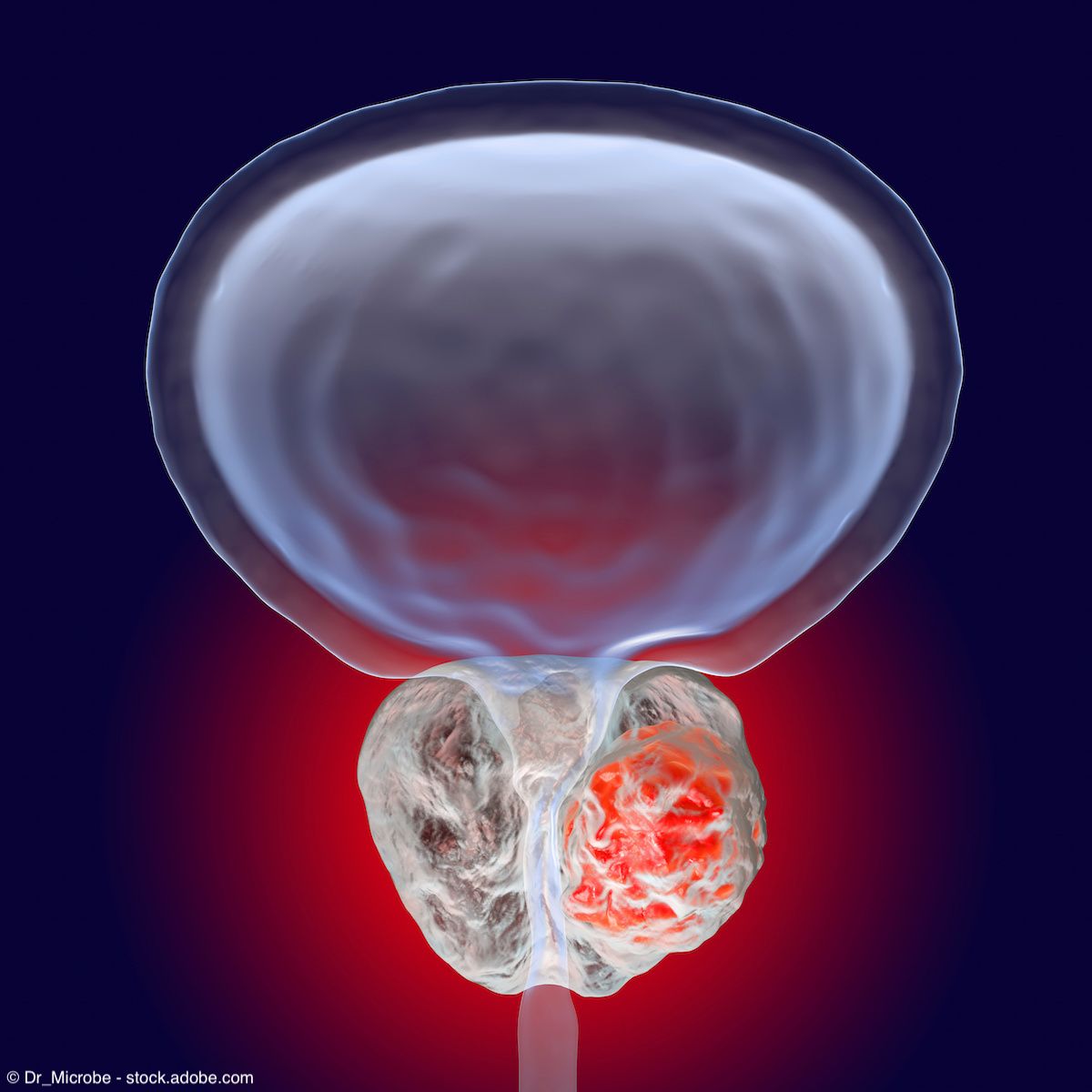News
Article
STOPCAP: ARPIs benefit younger patients with mHSPC
Author(s):
Key Takeaways
- ARPIs provide significant survival benefits in younger mHSPC patients, with a 13% improvement in 5-year overall survival and 21% in progression-free survival.
- The meta-analysis included data from 11 trials, with 7 trials and 7778 patients analyzed, covering various ARPI classes.
“Looking at our overall results, not surprisingly, we can show a clear benefit of ARPIs on overall survival," says David Fisher, MSc, MA.
An individual participant data (IPD) meta-analysis of androgen receptor pathway inhibitor (ARPI) trials found that these treatments confer clear survival benefits in younger patients with metastatic hormone-sensitive prostate cancer (mHSPC), whereas in older patients, the risks and benefits of each agent need to be carefully considered.1
David Fisher, MSc, MA

Explaining the background for the study, David Fisher, MSc, MA, said, “Multiple trials have demonstrated substantial outcome improvements from adding ARPIs to standard care. However, it remains unclear whether effects vary between different classes of ARPI, and it also remains unclear whether these effects might vary by characteristics of patients or of their disease.” Fisher, a medical statistician (senior research fellow) for MRC Clinical Trials Unit at University College London in the United Kingdom, presented the findings at the 2025 American Society of Clinical Oncology Genitourinary Cancers Symposium in San Francisco, California.
To address these questions, Fisher and colleagues conducted a pairwise meta-analysis of IPD from several completed trials. The primary outcomes were overall survival (OS) for main effects progression-free survival (PFS) for subgroup analyses. Prostate-cancer sensitivity survival was evaluated as a sensitivity outcome.
The investigators conducted an intention-to-treat, 2-stage, fixed-effect IPD meta-analysis of HRs with pre-specified sensitivity analyses. They adjusted for a core set of covariates including age, prostate-specific antigen level, performance status, Gleason score, and timing of diagnosis. They also adjusted for trial-adaptive changes or protocol modifications.
In total 11 eligible trials were identified, encompassing 11,454 patients. The investigators currently have data for 7 of these trials and 7778 patients (70%). Four of the trials are for androgen biosynthesis inhibitors (4685 patients, with data available for 100% of patients): STAMPEDE (NCT00268476), LATITUDE (NCT01715285), PEACE-1 (NCT01957436), and SWOG 1216 (NCT01809691). (SWOG 1216 was included for sensitivity analyses only.) Three of the trials are for “amide” treatments with or without abiraterone acetate (Zytiga) (3098 patients, with data available for 48% of patients): ENZAMET (NCT02446405), TITAN (NCT02489318), and STAMPEDE.
Regarding key patient characteristics, the majority of patients were synchronous, with the lowest rate being 68% for patients in ENZAMET. In addition, approximately half of each trial cohort had high-volume disease with the exception of LATITUDE, which had a 94% rate of high-volume disease. Higher numbers of patients in PEACE-1 (61%) and ENZAMET (45%) received docetaxel as part of standard of care; for the other trials, that rate was 11% or lower.
Median follow-up was approximately 6 years across the trials with the exception of LATITUDE (4.3 years) and TITAN (3.7 years). Median survival was approximately 4 years across the trials, with ENZAMET higher at 6.1 years.
“Looking at our overall results, not surprisingly, we can show a clear benefit of ARPIs on overall survival, with hazard ratio of 0.66, representing a 13% 5-year absolute improvement,” Fisher reported. The HR for PFS was 0.51 representing a 21% absolute improvement at 5 years.
“We saw no clear difference by class of agent,” Fisher added.
Fisher reported that no clear difference in the effects of ARPIs on PFS was seen when looking at volume of metastases, timing of metastatic diagnosis, clinical T-stage, Gleason sum score, nodal involvement , location of metastases, World Health Organization performance status, and body mass index at randomization. However, although age was not found to be prognostic, “we did see that for each 10-year increase in age, the relative benefit of ARPI decreased by 15% on the PFS outcome…and by 11% for the overall survival outcome.”
The investigators also evaluated PFS and OS according to 3 age groups: younger than 65 years of age, 65 to 74 years of age, and 75 years of age or older.
“In the 2 younger age groups…the effect sizes were very similar, but the effects were slightly smaller in the oldest age group,” Fisher said.
“We can confirm a clear benefit of ARPIs on both overall survival and progression-free survival for the majority of [patients with] mHSPC, and for younger patients, we can show a clear benefit from all the ARPIs in our data set. However, for older patients, the picture is less clear, and the benefits and risks of each individual agent need to be considered,” Fisher said.
REFERENCE
1. Fisher D, Vale C, Rydzewska L, et al. Which patients with metastatic hormone-sensitive prostate cancer (mHSPC) benefit more from androgen receptor pathway inhibitors (ARPIs)? STOPCAP meta-analyses of individual participant data (IPD). J Clin Oncol 43, 2025 (suppl 5; abstr 20). doi:10.1200/JCO.2025.43.5_suppl.20
















